THIS CRAZY DAY IN 1972: "Death was the extra man on field"
October 25 - 31, 1971
To access all site contents, click HERE.
Why do we run this separate item peeking into newspapers from 1972? Because 1972 was part of the ancient times when everybody read a paper. Everybody, everybody, everybody—even kids. So Steve Bertolucci, the 10-year-old hero of the novel serialized at this Substack, read the paper too—sometimes just to have something to do. These are some of the stories he read. If you’d like, keep up with the 1972 papers every day on Twitter, @RoselandChi1972.
October 25, 1971
Every paper headlined the same story on the front page today, except the Defender. The Daily News puts it above the masthead:
The Bears beat the Lions in Detroit 28-23, but almost as the clock ran out, Lion Chuck Hughes walked away after a play and collapsed on the field. The 54,482 fans in the stands watched silently as doctors rushed the field and frantically pumped Hughes' chest.
The most iconic photos of the event are of Dick Butkus standing nearby—one nearly covers the entire front page of Chicago Today. See “Tears, praise for Hughes” on October 26 for reactions to this photo, which incorrectly seems to show Butkus celebrating over a prone Hughes. Butkus would be attacked for it, though no one had contact with Hughes during his final play, and Butkus was the first to call for help.
“Hughes lay unattended for several seconds before the Bears’ Dick Butkus pointed out to the Lions bench that Hughes had fallen and was unconscious,” wrote the Trib’s George Langford in his front page story. Trainer Kent Falb of the Lions was the first to reach Hughes and Falb summoned two doctors.”
“I saw his eyes rolling around in his head and I called for a doctor,” the Trib’s Don Pierson quotes Butkus in his own story headlining the sports section. “I thought they were trying for an extra time out. Then I saw his eyes rolling and he turned blue.”
Directly underneath the Sun-Times logo Monday morning, readers saw a giant horizontal picture spanning the front page of Chuck Hughes laying chest down on the field, his head tilted sideways toward the camera, eyes shut, surrounded by the uniformed legs of other players standing nearby, cut off by the picture frame just above the knees.
“Death put a damp, chill hand on professional football Sunday afternoon,” starts Jack Griffith’s front page story.
Chicago Today’s Ed Stone writes the most gripping overall account, quoting Bears rookie cornerback Charley Ford, who’d lined up opposite Hughes for that final play:
“I watch a receiver’s eyes when he comes off the line…he might tip where the ball is going. Hughes…closed his eyes for an instant and lowered his head. I’ve never seen a receiver do that.” After Hughes collapsed, says Ford, Hughes’ “eyes were rolling and his hands were shaking at his sides.”
“I knew he was out,” says Ford. “He started changing colors.” As Hughes was placed on a stretcher and carried out of the silent stadium, writes Today’s Stone, “His arm flopped over the edge of the stretcher ominously”.
The Daily News’ Jack Schnedler best sums up the events leading up to Hughes’ collapse: “Lion quarterback Greg Landry was trying to move Detroit to a winning touchdown when he threw to Hughes for a 32-yard gain to the Bear 36 with 1:15 left in the game. Garry Lyle and Bob Jeter tackled him from opposite sides.”
“The Bears ran out the remaining minutes of their victory while the ambulance siren wailed away from Tiger Stadium,” writes Schnedler.
After the game, reports Today’s Stone, “Don Shinnick, Bears assistant coach, stood silently in the antiquated elevator which took writers down from the press box and said, to no one in particular: ‘The stupid game doesn’t mean much now, does it?’”
The Lions’ team doctor choked back tears, insisting Hughes was healthy as far as they knew. But Hughes had complained of severe stomach and chest pains ever since an injury Sept. 4. Exhaustive tests showed no injury, though Hughes said he “thought my insides were torn out”.
Players, doctors and fans agonized over whether the hits Hughes took just a few plays prior could have caused his death.
The Detroit Lions players sat silently in their locker room after the game until they got the news that Chuck Hughes had died from a PR representative. After the PR guy left, “a Detroit writer recalled that Hughes was the guy, one year ago in Green Bay, who was standing in a hotel elevator with teammate Greg Barton when a naked woman stepped into the elevator. Hughes calmly looked at her and said: ‘Going to the sauna?’”
It seemed almost wrong for the papers to report that the Bears won. Still, the rest of the game did get covered. In the sports section, the Daily News ran a giant three-photo strip titled “Butkus bop saves day”: “Detroit receiver Charlie Sanders (88) reaches up to snare pass in fourth quarter, but Dick Butkus of the Bears throws a bone-shattering shoulder into him, jarring ball loose for no incompletion. Two more incompletions ended Detroit’s last threat.”
Chuck Hughes died at the tragically young age of 28, leaving a wife and 23-month-old son.
Addendum: Steve called to discuss this one. The Chuck Hughes game was a jaw-dropper for a 10-year-old kid in 1971.
“I remember I ran home to watch the game that day,” he said. “We were all there, everybody, watching the game when it happened. And it was just total confusion.”
“Did Chuck Hughes’ arm really kind of fall off the stretcher as they carried him out?” Steve asked me.
Yes, I said, and reporter Ed Stone of Chicago Today was the only one who got that in the story: “His arm flopped ominously over the edge of the stretcher”. (Though to be fair, as newsies know, the other reporters may have included that detail, and it may have gotten cut for space by an editor.)
“I thought so,” said Steve, “but I wasn't sure it was real. I recall that arm just dropping, with no life to it, and it was just shocking,” Steve marveled, 50 years after watching Chuck Hughes carried off the field, with his family in the front room of their Roseland bungalow on Wabash.
I was happy I’d gone to the trouble of getting the Chicago Today coverage of that day, just for those details. That’s why it’s so amazing to be able to see so many different newspaper accounts of one event. This was just a football game. Imagine how much we lose now as a society with so many fewer reporters covering real issues.
And let's remember Dick Butkus is a proud son of Roseland, the first Butkus born outside the family's tiny four-room house at 10324 S. Lowe—of course at Roseland Community Hospital.
October 26, 1971
Chuck Hughes coverage continues
Detroit Lion Chuck Hughes died of a heart attack in Sunday’s game against the Bears. “It could have happened anywhere,” says the Lions team physician. A massive blood clot cut off blood in Hughes’ left coronary artery, 70% closed by what they then called “hardening of the arteries.”
Word reached the Bears during a press conference at the Bear offices, reports the Trib’s Don Pierson. Bears VP Ed McCaskey had just announced the Bears lineup to attend a Tuesday Detroit memorial for Hughes—himself, team captains Dick Butkus, Willie Holman, Jim Cadile and Dick Gordon (subbing for injured Gale Sayers), plus Bob Wallace, a former college teammate.
The news “didn’t seem to make anyone feel any better,” writes Pierson, but talk “inevitably” turned back to football. Everybody is high on the Bears and young quarterback Bobby Douglass, who subbed for injured Kent Nix against the Lions and remains in place at least for next Sunday’s match against Dallas.
“The Bears have not had as good a record after their first six games since 1963, the year they won the NFL title,” writes Pierson. They’ve beaten the best teams in their division—the Lions and Vikings—and now face four home games in a row. The adversaries are tough, says Pierson, but “There are no super teams in the league. At least every team has proven it can lose.”
Back to the Bears office because it turns out Papa Bear George Halas had been standing by somewhere in the room this whole time as the press conference went on. I picture Papa Bear with a semi-scowl on his face, wearing that hat and overcoat that make him almost indistinguishable from Vince Lombardi. But the press conference is inside so I admit he was probably not wearing the hat and coat.
“Someone asked if the Bears were beginning to sense they could go all the way,” Pierson reports, “but were stopped by George Halas Sr., who said: ‘Hold it, hold it, now.’”
Presumably everybody did as they were told. I know I would.
Later, though, as Coach Jim Dooley praises Bobby Douglass, Halas weighs in again: “That’s the best the (offensive) line has looked in two years.”
October 26, 1971
Chicago Daily News: Tears, praise for Hughes
While the morning papers wrote about the Hughes Detroit memorial on Tuesday in the future tense, the Daily News was able to get coverage into that day’s evening paper, albeit via AP:
“Friends and teammates of Chuck Hughes were joined by civic leaders and hundreds of fans Tuesday at a requiem mass for the Detroit Lion receiver, who collapsed during the game Sunday against the Chicago Bears.”
As the morning papers already reported, a Bears contingent attended the mass: VP Ed McCaskey, team captains Dick Butkus, Willie Holman, Jim Cadile and Dick Gordon (subbing for injured Gale Sayers), plus Bob Wallace, a former college teammate.
And as mentioned in the first Oct. 26 post, the most iconic photos of Hughes’ on-field collapse were of Dick Butkus standing nearby—one nearly covered the entire front page of Monday’s Chicago Today. The photos drew personal attacks, even though Butkus was the first call for help, and no one had contact with Hughes during his final play.
The incident weighed heavily on Butkus. He wrote about it both in his initial 1972 autobiography “Stop-Action” written with Robert W. Billings, and in the 1997 “Butkus: Flesh and Blood” with Pat Smith.
From “Flesh and Blood”: “Someone in the end zone with a telephoto lens had taken a picture of me just as Hughes fell to the turf. It appeared the next day in one of the Detroit newspapers, and I was surprised to see myself standing almost on top of Hughes with my hands on my hips. The truth was that I was at least 20 yards from Chuck…But the angle of the camera and the distortion caused by the long lens dramatically altered reality. Except for the relative few who were at the game…the city of Detroit and the rest of the country viewed the incident via that photograph and got the distinct impression that I was standing over Chuck like a victorious gladiator.”
Butkus is bitter in “Stop-Action.” After the requiem mass, he writes, Lions coach Joe Schmidt, owner Bill Ford and GM Russ Thomas came over to thank the Bears contingent. Butkus: “What hypocrites…..When I got home that afternoon I found a magazine that someone sent me. There was a story on the Lions’ middle linebacker, Mike Lucci, quoting (Lions owner) Ford as saying, ‘Something ought to be done about that Butkus. He intentionally tries to hurt people, and that’s wrong.’”
The magazine article quoted owner Ford and GM Thomas similarly. Thomas claimed he’d told McCaskey to bar Butkus from football. “They’re nothing but a bunch of lying crybabies,” Butkus writes in “Stop-Action.” “That goddam Lucci. He came up to me at the Brian Piccolo golf tournament last summer and he was trying to pump information out of me on how to negotiate a contract.”
Butkus also describes the mail that came in after Hughes’ requiem mass:
“I knew it would come, the hate stuff. The first one addressed, Dick Butkus, Murderer. It was scribbled in pencil. Curiosity made me open it. Some quack was saying, Well, you finally did it. You finally killed somebody. Aren’t you proud now? You’re going to get yours sooner or later.”
But Butkus opened another letter, typed, with a return address and read: “‘After seeing you wave and trying to get the doctors out there I’ve completely changed my feelings and ideas about you and the Bears.” Butkus appreciated that letter. “At least he left me with the idea that everyone in Detroit isn’t a jerk.”
This is too good not to mention: Directly following his recounting of Chuck Hughes’ death and aftermath, Butkus goes into his problematic history with the Lions, recalling an earlier game against Detroit at Wrigley Field. Butkus was warming up when Papa Bear walked over.
“’Hey kid,’ (Halas) said from behind his sunglasses. ‘Did you hear what (Lions center Ed) Flanagan said about you?’ I looked up at the Old Man. ‘What do you mean, Coach?’ Halas looked away. ‘I’d get that son of a bitch for what he said.’ Then he strode off the field.”
It worked.
October 27, 1971
Chicago Daily News: Injured gridder fights for life
Chicago anxiously follows the front-page story of Marco Cervantes, a 17-year-old Senn High School football player injured the previous Saturday during a homecoming game with Kennedy High.
Marco’s is a heart-wrenching story at any time, but all the harder coming after Chuck Hughes’ death during Sunday’s Bears-Lions game. Marco underwent a five-hour brain surgery that Saturday night for a “cranial hemorrhage” at Ravenswood Hospital.
Marco’s family told reporters the doctors held out little hope. Senn football coach Sal Loverde said Marco “had caught a pass and started to run”. Seeing he was going to be tackled by a much heavier player, Marco lowered his head to hit that player first.”
Marco walked back to the huddle after his tackle, but the quarterback saw that Marco’s eyes were glassy and sent him out of the game. The coaches called a doctor over immediately, who tended to Marco during the wait for an ambulance. Coach Loverde said “the boy had three cardiac arrests and his lung collapsed” at the hospital before surgery. Chicagoans pray for Marco, and watch the paper for more news.
October 27, 1971
Chicago Daily news: $38 million for Model Cities OK’d
By Jay McMullen
Today’s installment includes fraud allegations on the floor of City Council—always fun—and we check in with one of the participants for a look back: UIC professor and former alderman Dick Simpson.
This City Hall story is from reporter Jay McMullen, who would marry Jane Byrne in 1978 and then rather astoundingly occupy City Hall himself by 1979 when she became Mayor Jane Byrne. But that is all unknown and ahead of him today as he covers a typical crazy Chicago City Council meeting.
After two hours of debate and accusations, the Council passes (41-2) a $38 million budget for the federally-funded Model Cities program, meant to alleviate urban poverty. First, the Council quickly votes down several amendments proposed by Prof. Simpson, then a newly-minted alderman from the 44th Ward and already a thorny thorn in the side of Mayor Richard J. Daley’s administration.
And the Council ignores ample actual evidence from independent Ald. John Hoellen (47th) of extensive fraud in the Model Cities program. Hoellen accuses Dr. Deton J. Brooks Jr., commissioner of the city’s Dept. of Resources, of making up fake poverty groups to get federal money for Model Cities, and ordering supplies for real organizations that seem to have fallen off a truck somewhere.
Hoellen reads aloud from letters from the Uptown Chicago Commission accusing Brooks of “playing a serious hoax on the American taxpayer” by procuring $443 to fund a summer recreational program that the Uptown Chicago Commission did not run. Remember, that’s $2,906 in 2021 money.
Hoellen also shows the Resources Dept. ordered $990 of basketballs for the nonexistent 48th Ward Youth Foundation, using the home address of 48th Ward Ald. Marylou Hedlund.
Ald. Hedlund—referred to in the Daily News as “Mrs. Hedlund”—“quickly rose” and said, “The address is my house. I never applied for such a grant. I never received any basketballs.”
Then Hoellen pulled up a $1,011 funding request from the Resources Dept. for a “46th Ward Youth Foundation.” “There is no such foundation!” Hoellen declares.
As mentioned, the Council approved the $38 million in Model City funding anyway. Almost as an aside, mentioned quickly in the last two paragraphs of this story, Mayor Daley introduced and the Council instantly approved two measures banning discrimination against women in the city’s fair housing ordinance and its antidiscrimination ordinance. Both ordinances had only banned “discrimination by color or creed.” Presumably Mrs. Hedlund voted in favor.
I wondered if Prof. Simpson, who left City Council in 1979 and built a long illustrious career at UIC, remembered this, or if it had sunk into the mists of time. Oh yes, he remembered, and explained why the Resources Dept. would be making up all these cheesy little fake funding sources.
“Model Cities was particularly problematic because theoretically there were elections for the governing boards of the (participating programs)—there were I think four of them,” Simpson recalled.
The money was supposed to fund programs to alleviate poverty, “but in truth they were primarily programs to hire patronage workers,” Simpson explained.
“So Model Cities was theoretically a national program to eliminate poverty, but in fact it was used as a slush fund,” said Simpson. “There were hundreds of patronage workers.” Under Harold Washington, the Model Cities money was rerouted to existing community organizations for things like homeless shelters and affordable housing, said Simpson.
I thanked Prof. Simpson for explaining exactly why the Resources Dept would order almost $1,000 of basketballs, for instance. The fact that Model Cities was a patronage slush fund, he explained, “wouldn’t show up easily in the histories unless they had some of our debate from the floor,” he noted.
Prof. Simpson’s most recent terrific book, by the way, is “The Good Fight: Life Lessons from a Chicago Progressive.”
October 28, 1971
Chicago Daily Defender: Welfare machine grinding to a halt
The Defender headlines Illinois Gov. Ogilvie’s threatened welfare cuts on the front page, albeit underneath today's “Page One Miss." Two articles on page 3 examine the welfare crisis.
Staff writer Robert McClory begins a two-part indepth look at the Cook County Department of Public Aid (CCDPA). Ogilvie plans to cut general assistance welfare payments by 53% starting Nov 1. McClory is himself a shining Chicago story.
A Southwest Side native, McClory went to Quigley Prep, became a priest and served at St. Sabina's 1964-71 as the parish grappled with integration and white flight. He served and became lifelong friends with Fr. Phleger, now the long-time St. Sabina pastor.
But McClory fell in love with Sister Mary McComish, and they both left their vocations to marry. McClory went into journalism ,and the white ex-priest worked for the Defender 1971-79. Then he became a long-time, beloved staff writer at the Chicago Reader, and a Medill prof.
Fellow veteran Reader writer Mike Miner eulogized McClory after his 2015 death. His memorable lede: "Bob McClory covered human decency at the Reader."
But back to the Defender's welfare cut articles today, as McClory begins a two-part indepth look at the Cook County Department of Public Aid (CCDPA).
Gov. Ogilvie plans to cut general assistance welfare payments by 53% starting Nov 1. That’s Monday.
Even if Ogilvie’s cuts are averted, writes McClory, CCDPA “faces manpower and organizational problems that may wreck the county welfare program all by themselves.” CCPDA officials report they’re severely understaffed due to staff turnover averaging 56% per year, and the state imposed a hiring freeze on Aug. 31.
CCDPA Director David Daniel wrote state Public Aid director Harold Swank that unless he gets 113 new caseworkers and 111 new clerks, “the public aid situation will soon become ‘insurmountable.’”
Meanwhile, Cook County is “making last ditch efforts” to get Ogilvie to rescind the welfare cuts. Nearly 50,000 county welfare recipients would see their aid slashed. Cook County President George Dunne has asked the state’s attorney office to sue in Circuit Court.
Edward T. Weaver, the state public aid director, says the 53% cut in general assistance welfare is the only way to avoid cuts of 50-60% to welfare across the board, including for the blind, elderly, disabled and dependent children.
October 28, 1971
Chicago Tribune: Clarence Peterson column
Tribune TV columnist Clarence Peterson answers reader questions today, and already Ch. 2’s heavily promoted new anchor Bob McBride, who premiered Monday night, is the subject of a reader query. See this week’s compilation of MIKE ROYKO 50 YEARS AGO TODAY for the hilarious background on McBride—who will pop up throughout 1971.
From reader Phil Walker: “I saw an advertisement for channel 2’s new anchorman, Bob McBride, that said that since he’s left Detroit, ‘people have been walking around Detroit with their heads down, muttering ‘The thrill is gone. The thrill is gone.’ Is this true?”
Clarence Peterson’s answer: “Of course it’s true. They also walked around muttering when Ford closed down the Edsel plant.”
The other letters are heavily weighted toward gossiping about “McMillan and Wife” and star Rock Hudson. One reader wants to know if it’s true that Rock Hudson just married Jim Nabors “in a formal ceremony in Hollywood.” Peterson scoffs at the idea. Why, asks Peterson, would two stars “who have become household words thru their association with ‘clean’ entertainment be stupid enough to jeopardize their careers with anything so bizarre?”
To put this in context, the Defender today ran a brief item headlined “Gay lib fights job bias”—the Chicago Gay Alliance asked the Illinois Fair Employment Practices Commission “to prohibit discrimination by private employers against female and male homosexuals and against single persons.” Single people were included because discrimination against singles “becomes de facto discrimination against homosexuals,” said the Alliance.
So the real question is, why didn’t Peterson just point out that gay marriage did not exist in 1971?
October 29, 1971
Chicago Daily News: Cheryl says ‘Fly Me’
The News, supposedly a little classier because it was a broadsheet and ran its own foreign bureaus, snuck some cheesecake onto the front page via an AP article that is really a picture caption, and the caption is really an excuse to run a picture of a pretty stewardess “shown standing near the tail section of a 747 Jumbo Jet at Miami”.
Twenty-two-year-old National Airlines stewardess Cheryl Floravente was the first employee featured in her employer’s infamously sexist ad campaign. Below, Cheryl’s ad with the headline that is single entendre—it can only be taken one lascivious way: “I’m Cheryl. Fly me.”
The National Organization for Women, founded recently in 1966, opposed the sexist National ads. The AP intrepidly reports that Cheryl disagreed with NOW’s assessment.
October 29, 1971
Chicago Tribune, Clarence Peterson: ‘Leaning Bob’ McBride Debuts with Polysyllabic Performance
Like Mike Royko on Tuesday, Trib TV columnist Peterson mocks the fanatical Ch. 2 campaign promoting new anchorman Bob McBride. (See this week’s Mike Royko 50 Years Ago compilation for Mike’s take.)
The full-page newspaper ads for Bob McBride have pummeled Chicagoans, because 1971 is a year when everybody is still reading newspapers. And the ads, Peterson recounts, say things like, “If you watch Fahey or Floyd, you’ll miss one of the most important events in WBBM-TV’s history. The Chicago premiere of Bob McBride.”
For younger readers, “Fahey” is Ch. 7’s head news anchor Fahey Flynn, and “Floyd” is Ch. 5’s Floyd Kalber—both veterans way ahead of Ch. 2 in the ratings.
Sample Bob McBride ad, post debut:
“One was beginning to think of Bob McBride’s Chicago television debut as something akin to the Second Coming,” sniffs Peterson. Finally the big debut came this past Monday night, and Peterson admits that Bob looked good: “Something like the pilot in Shelley Berman’s airliner routine.”
Shelley Berman’s airliner routine is a joy to behold, much more interesting apparently than Bob McBride’s first night on the air. The link in the previous sentence takes you to Berman’s performance on the Ed Sullivan show and is well worth the click. Berman describes all the reasons he finds flying terrifying—starting with the hordes of booths and slot machines that he says filled the airport terminals at the time selling life insurance good for a single flight, and ending with the pilot:
“At this point let’s everybody for just a second close your eyes and visualize a commercial airlines pilot. Have you got ‘im? Isn’t he handsome? Clear blue eyes, ruddy complexion, a crooked smile but straight teeth. It’s the father image, people. Daddy is gonna take us flying, that’s the attitude you have.” Then Berman imitates the pilot addressing the passengers, with clearly no idea where he’s flying to or at what altitude.
Peterson doesn’t describe McBride's performance that badly, but he feels nobody was in control of the newscast, which was hijacked for 10 minutes by a doctor explaining why Chuck Hughes died of arteriosclerotic coronary artery disease during the Bears-Lions game last Sunday.
“For ‘one of the most important events in WBBM-TV’s history’…it was not TV 2 News’ very finest half-hour,” Peterson concludes. But Peterson did have lunch with Bob McBride on Wednesday, and he seemed like a nice guy.
Do you dig spending some time in 1972? If you came to THIS CRAZY DAY IN 1972 from social media, you may not know it’s part of the book being serialized here, one chapter per month: “Roseland, Chicago: 1972.” It’s the story of Steve Bertolucci, 10-year-old Roselander in 1972, and what becomes of him. Check it out here.



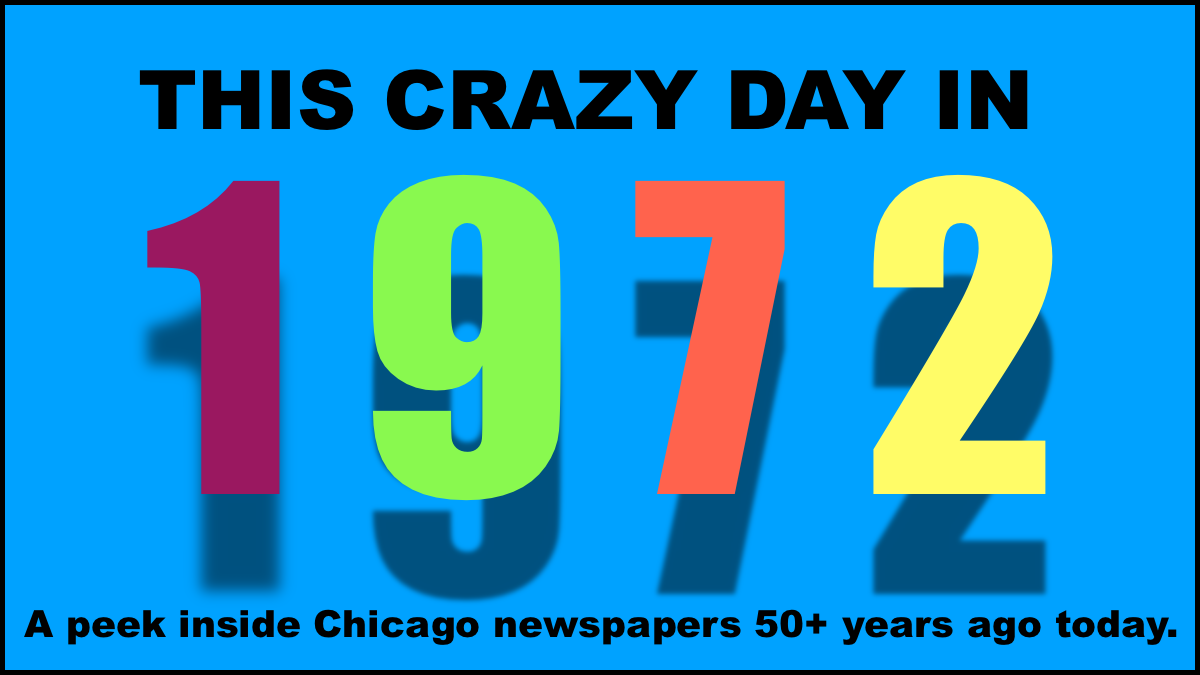
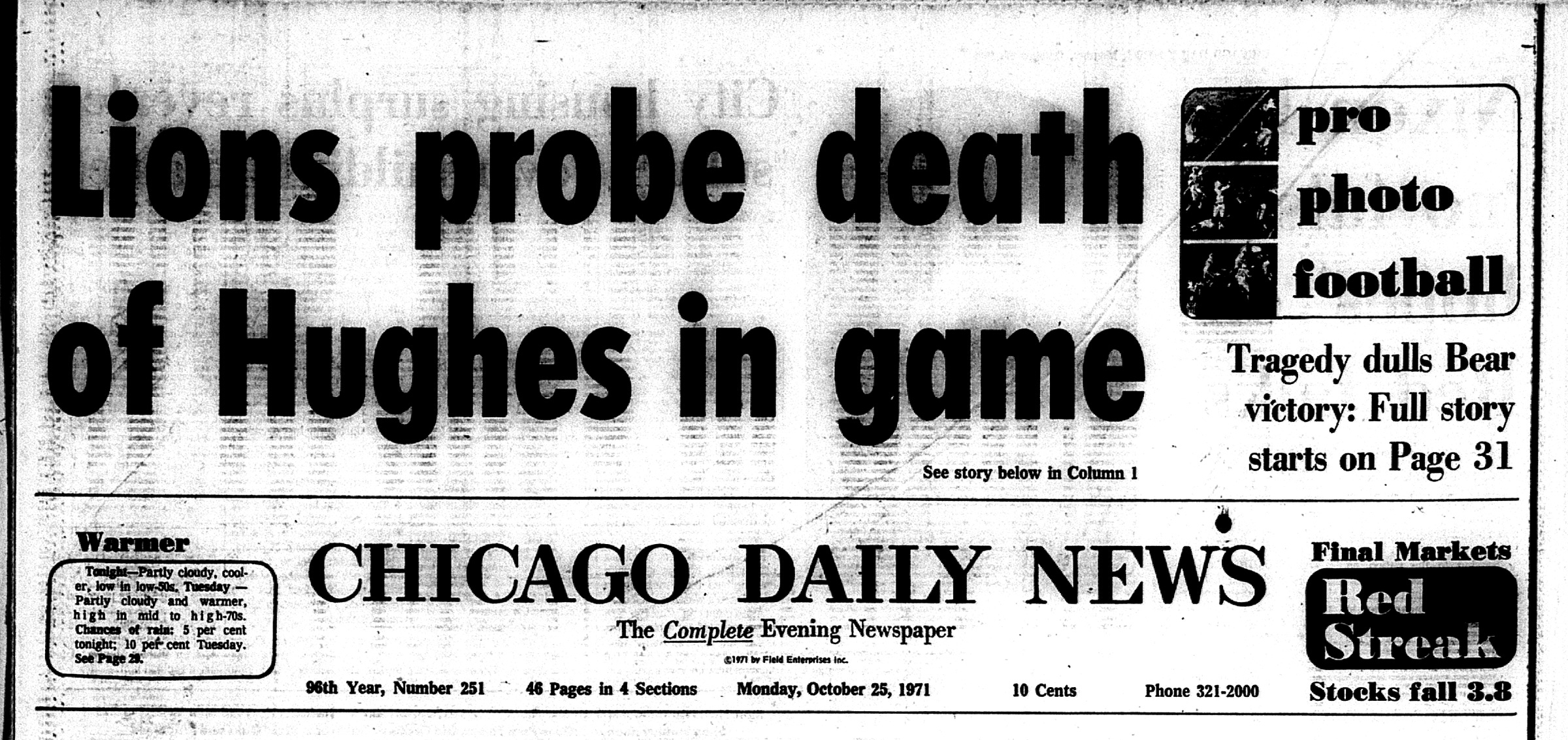
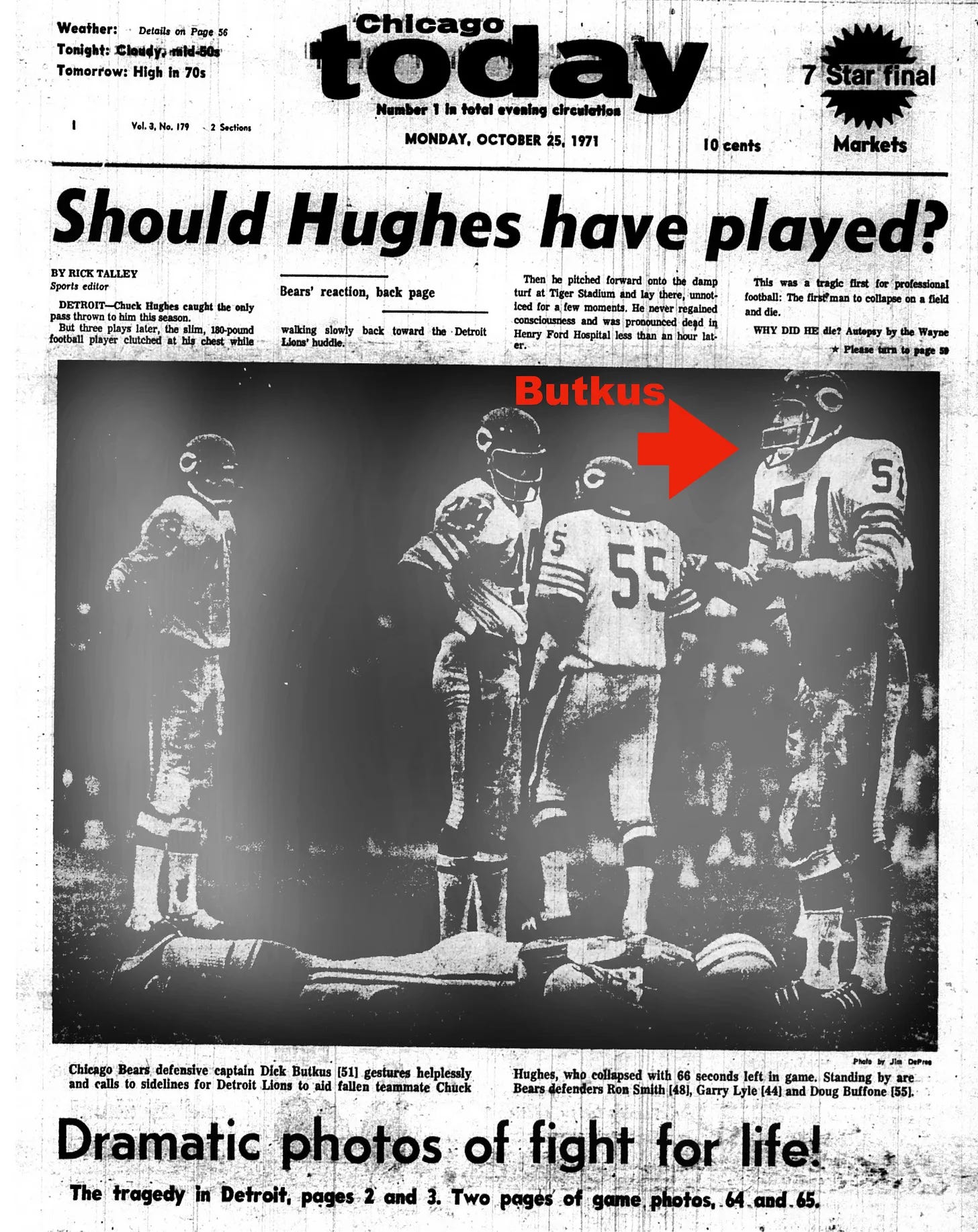
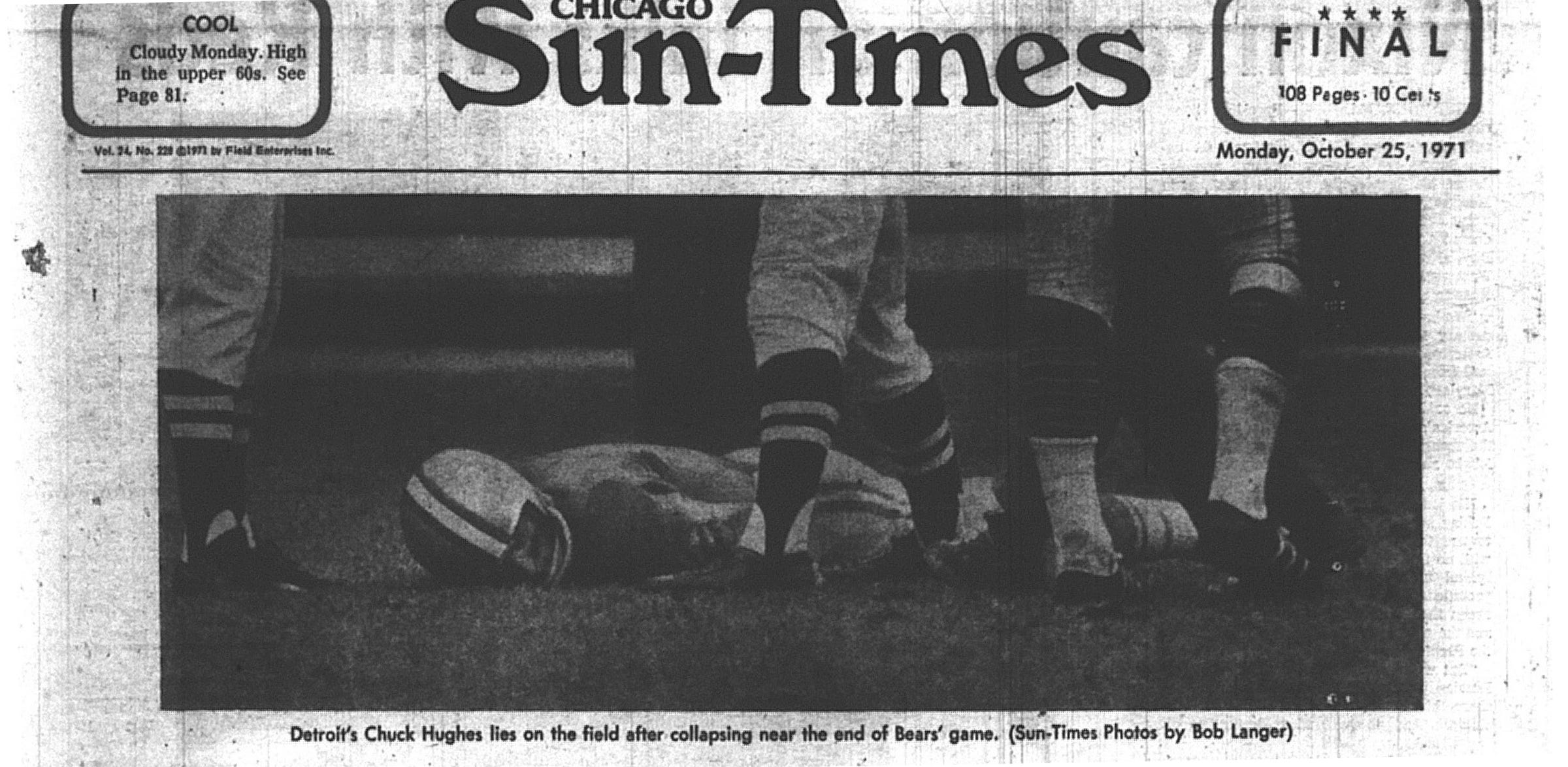

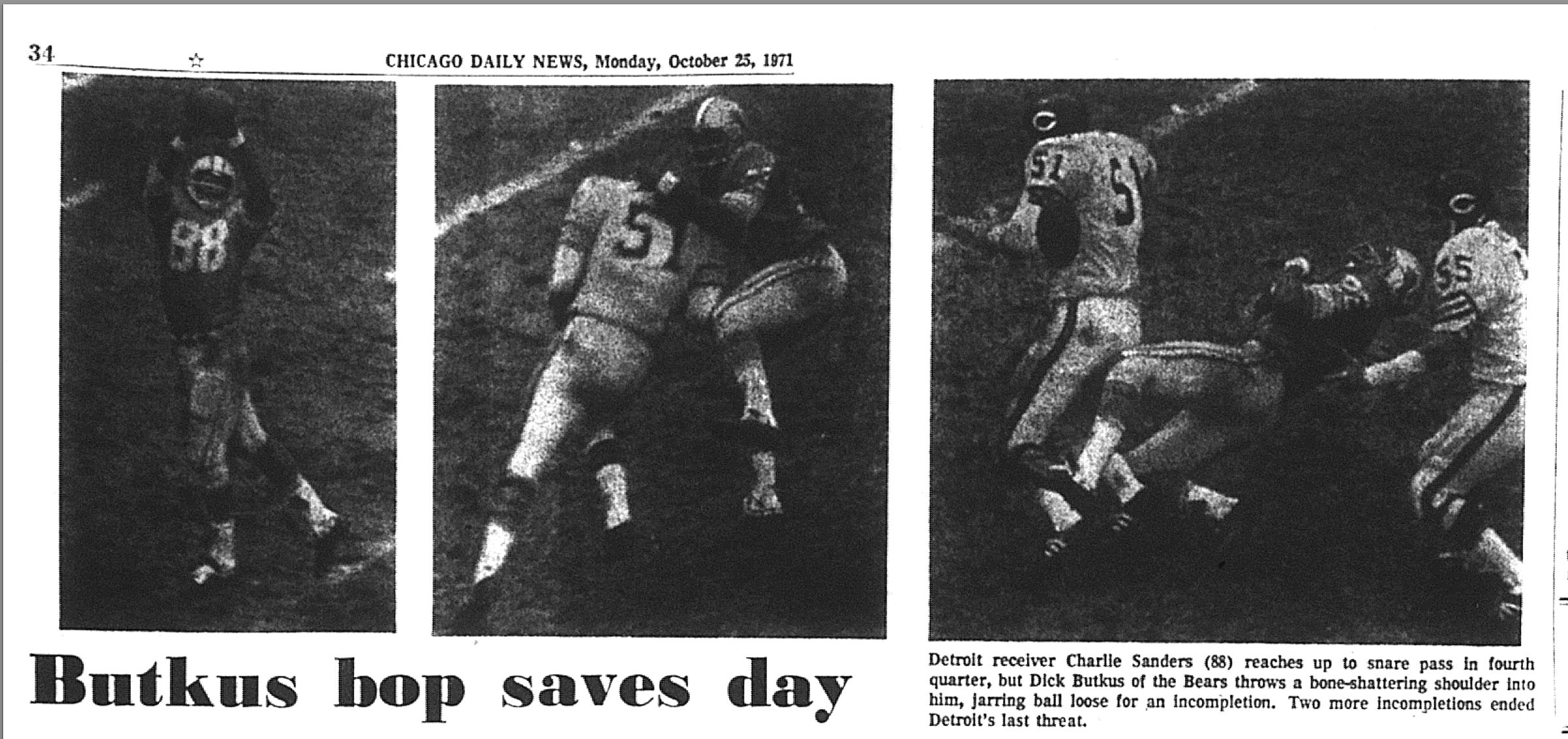

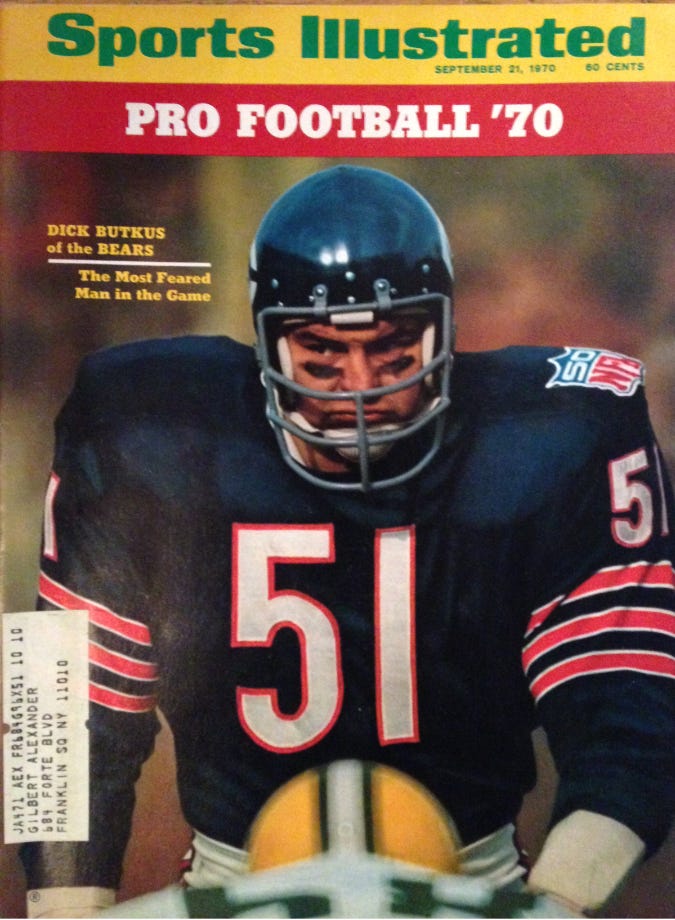


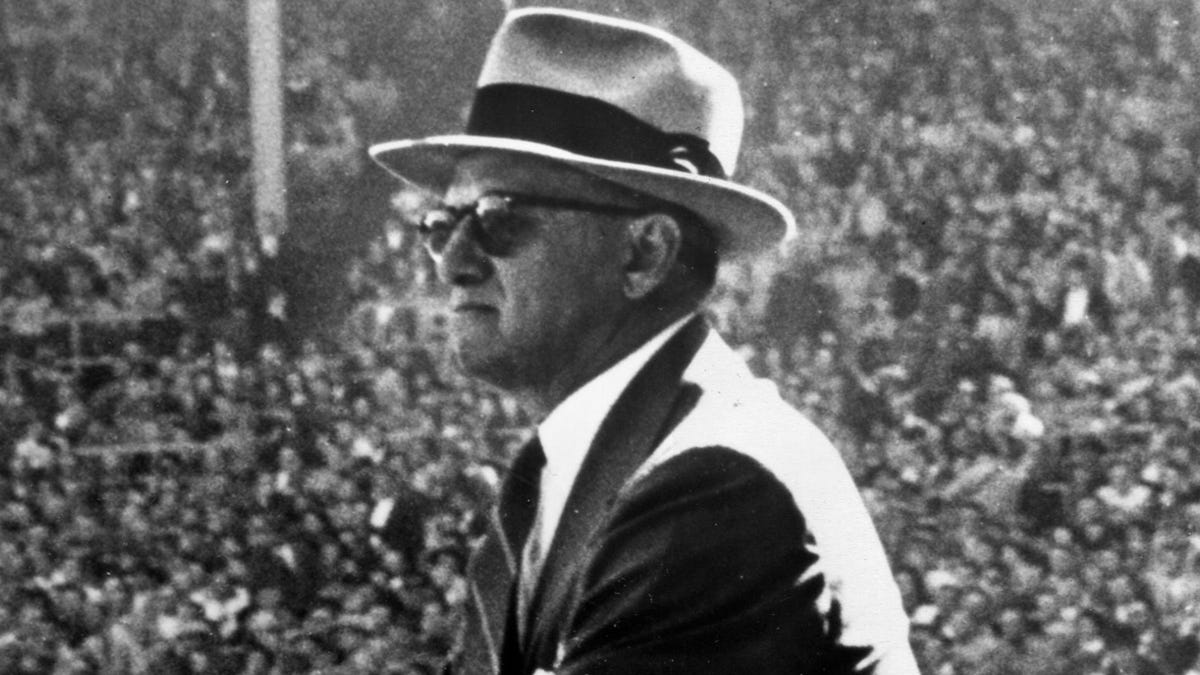
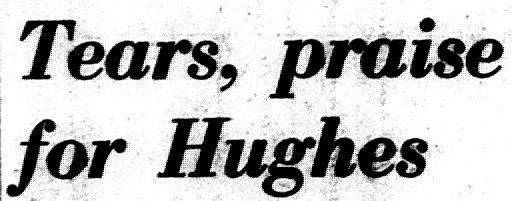
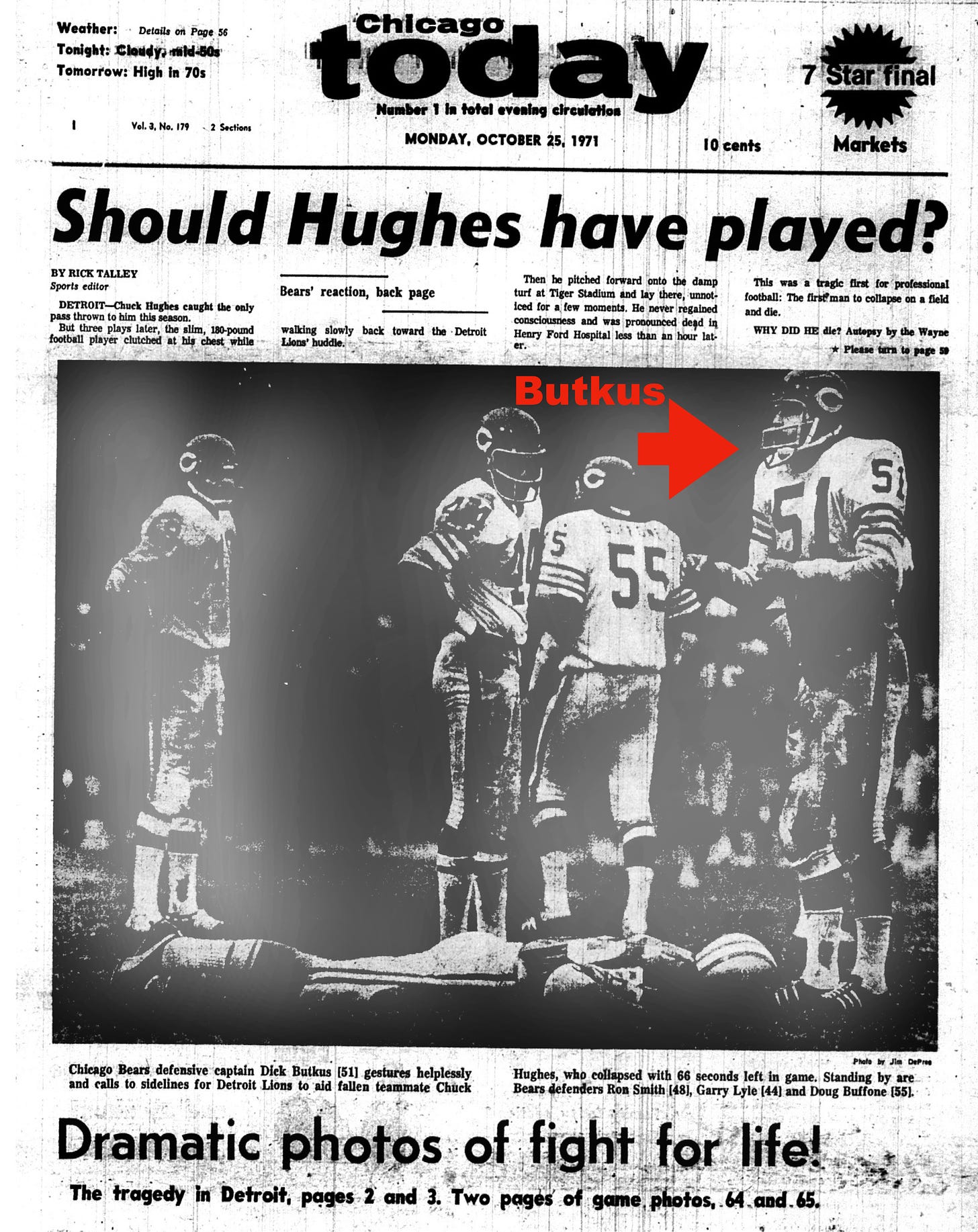
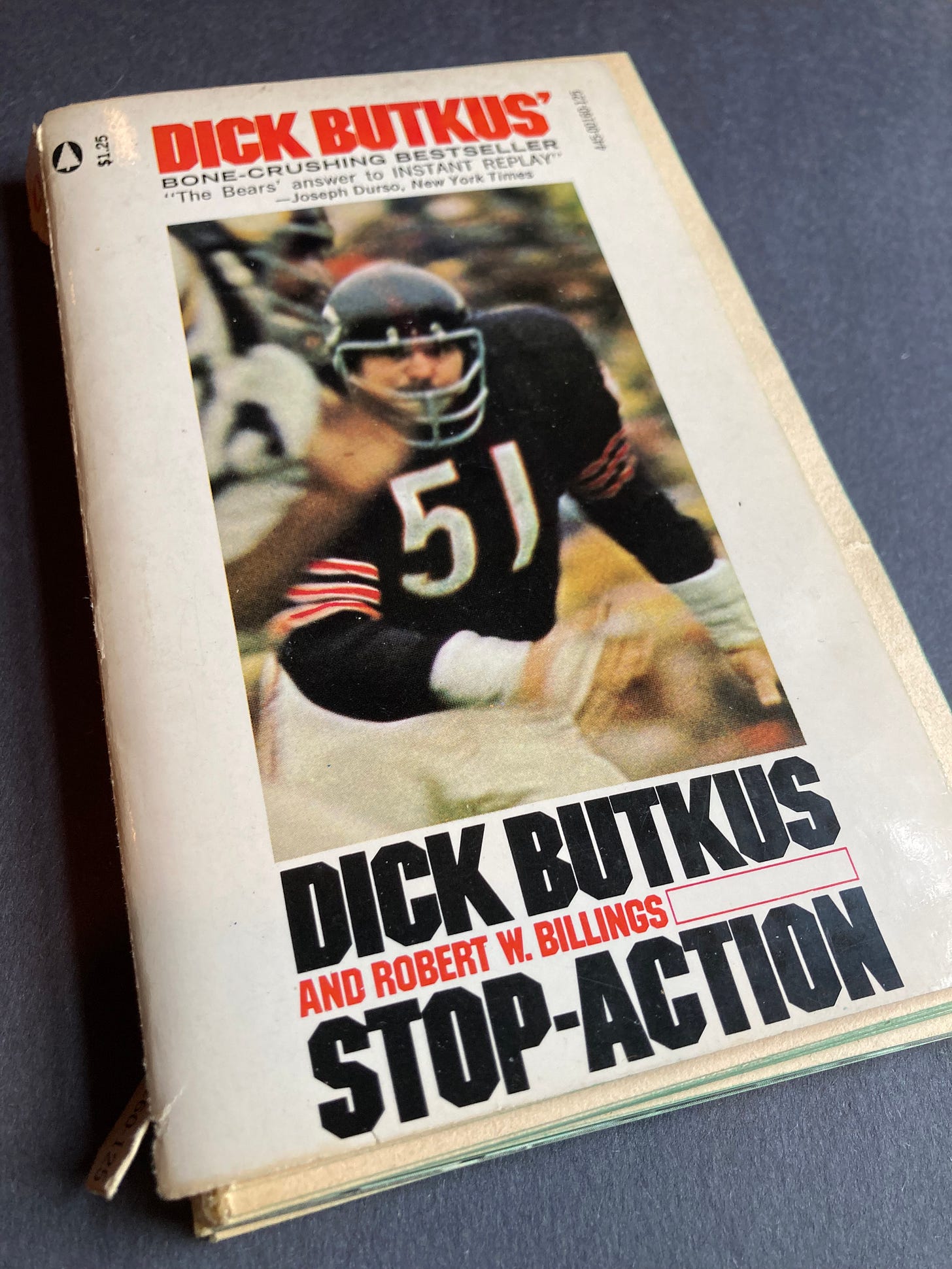
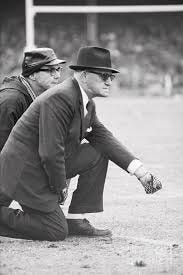

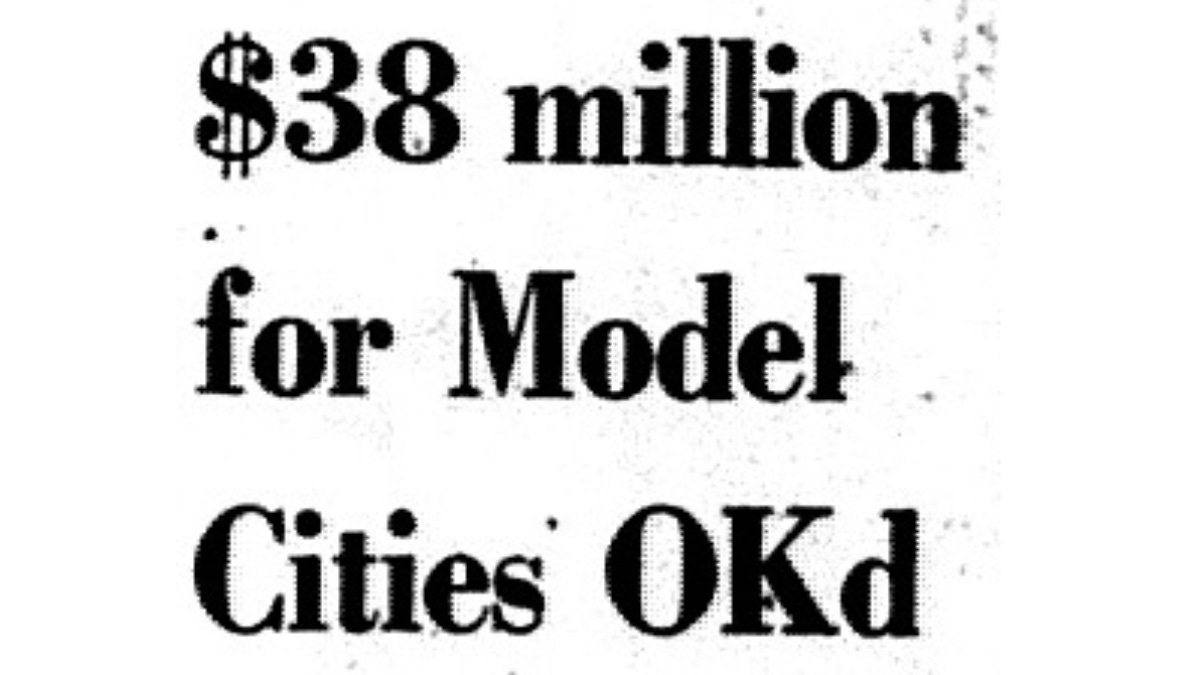
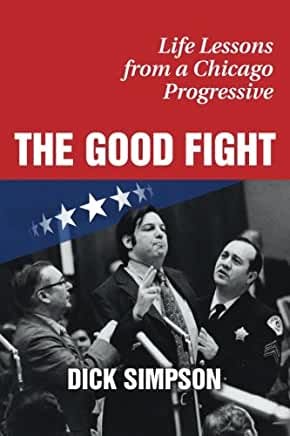
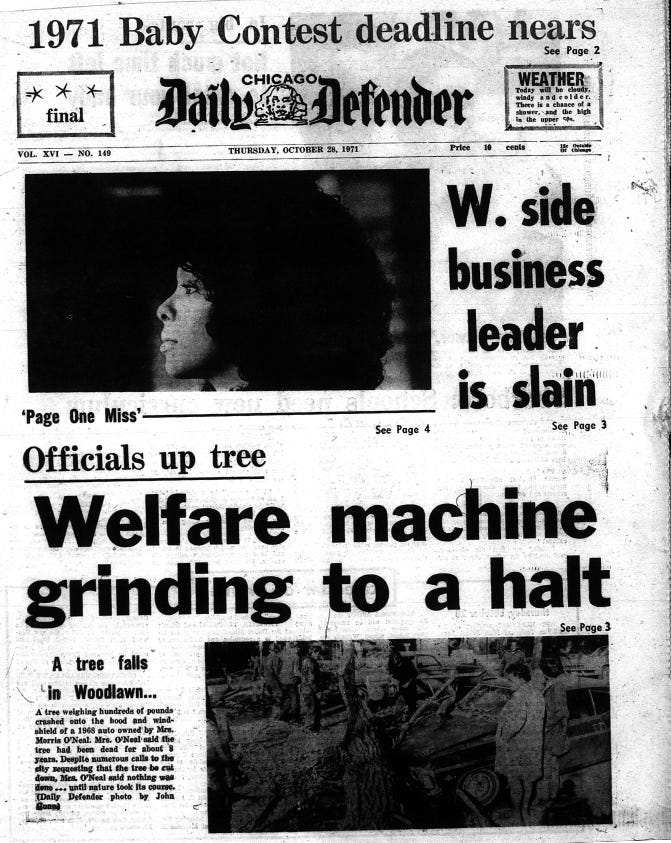
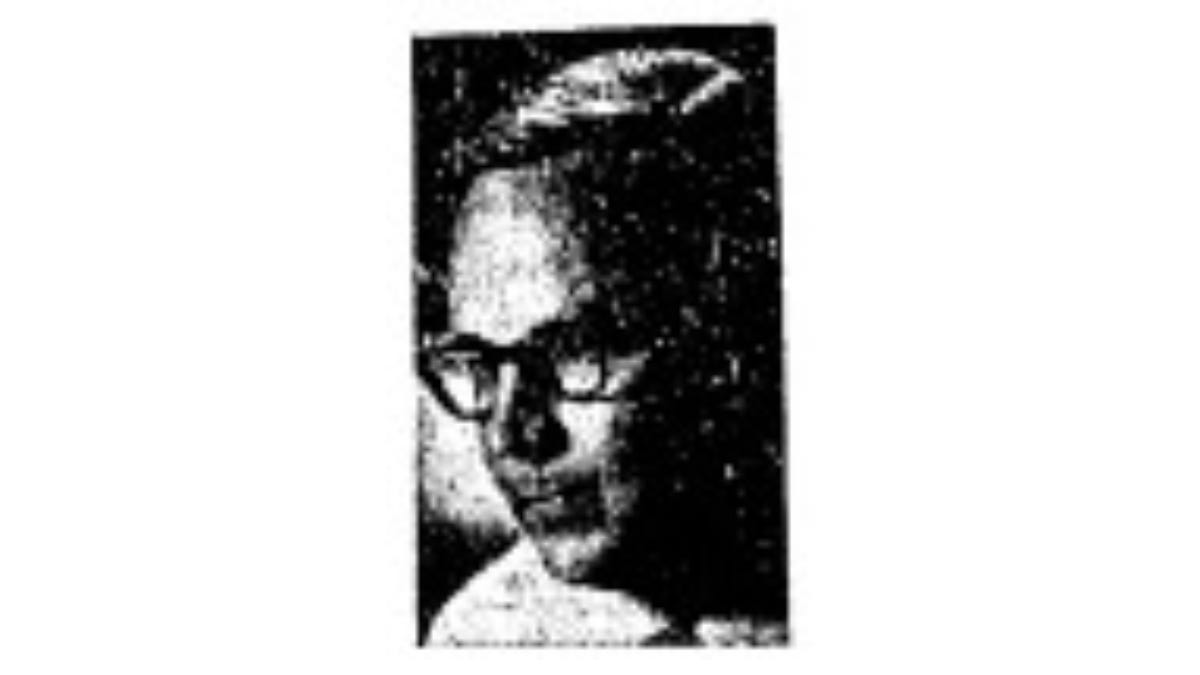
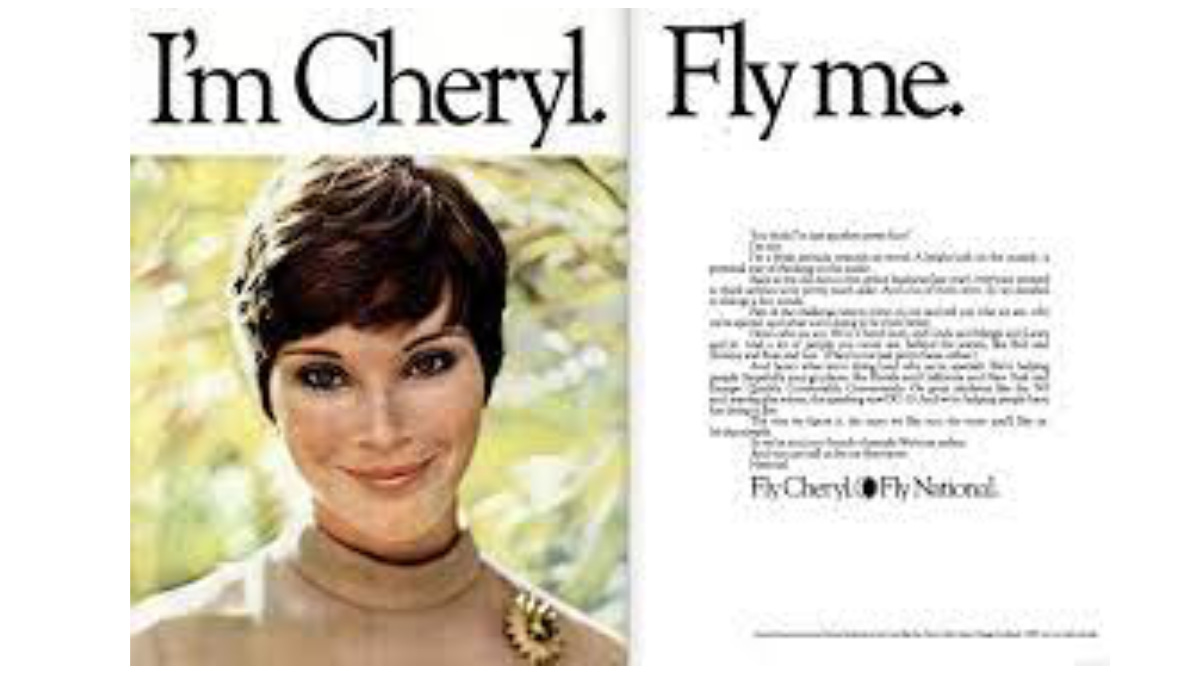

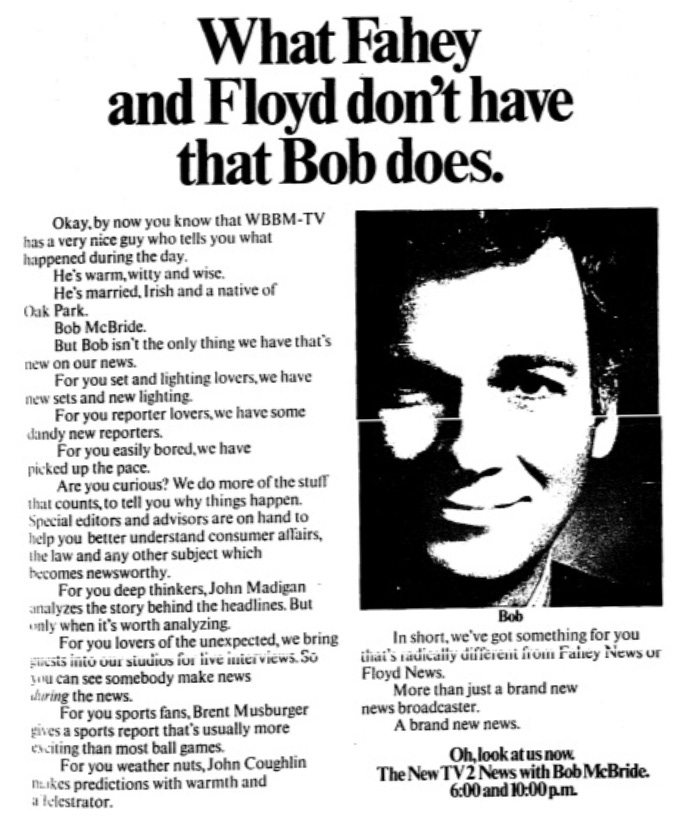

Of course the cowboys slept with their cows! You forget, who do you think the cowboys were having sex with? Very old joke, based the crack: Where are you from? Utah. Ah yeas, where men are men & the sheep are scared.